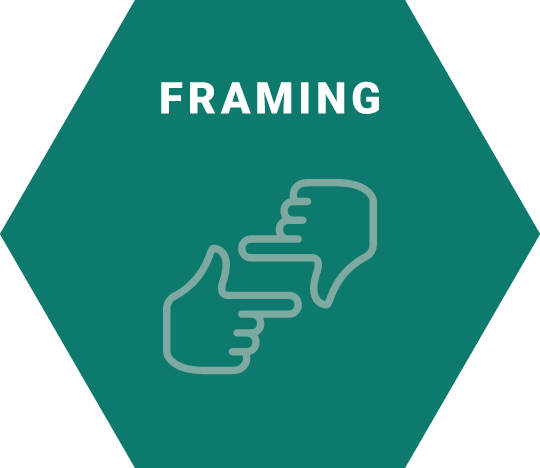
What is Framing?
Framing enables you to define the intent, problem or opportunity to be addressed by using the opinions of different stakeholders. Framing the intent allows you to consider the complexity of the space you are entering to find a problem or challenge that people agree to, can easily wrap their head around, and agree is worth solving.
The methods in this module will allow you to step back and evaluate the big picture before zooming in on the details to ensure stakeholders agree on the problem that needs to be solved.
A frame is a perspective that:
- Directs attention to one place instead of another
- Says some things are important, and other things are less important
- Can change the way we think about and respond to a situation
- Helps us determine feasibility — the things we have the most ability to impact
Why is it important?
Framing helps a team or stakeholder group dive into a problem, challenge or opportunity together so they may agree on a definition of the root problem, determine what can and can’t be changed about the present situation, and suggest potential courses of action. Good Framing:
- Welcomes different perspectives
- Shines a light on blind spots, identifying potential areas of inquiry
- Makes the problem tangible and understandable
- Identifies potential barriers
- Defines resources that are available or needed
While framing your intent, you may feel uncomfortable due to the abstract nature of the exercises. However, rest assured that these exercises will empower you to dive into really important issues and drive positive impacts. And, without alignment, it will be very difficult to drive any concerted action.
Methods
Collective Mind Mapping
Invite multiple points of view to gain a big picture understanding of the problem, challenge or opportunity to be addressed
Overview
Collective Mind Mapping is a method that invites input from a variety of people to explore available information and perspectives, find common ground, and ultimately align different stakeholders towards a common vision or desired outcome.
How to facilitate a Collective Mind Mapping exercise
Because this is a team activity, you want to make sure that everyone who is participating can contribute to the Collective Mind Map in real time.
Start by drawing a large bubble in the middle of the map and write the initial definition of the opportunity or challenge to be discussed inside of it.
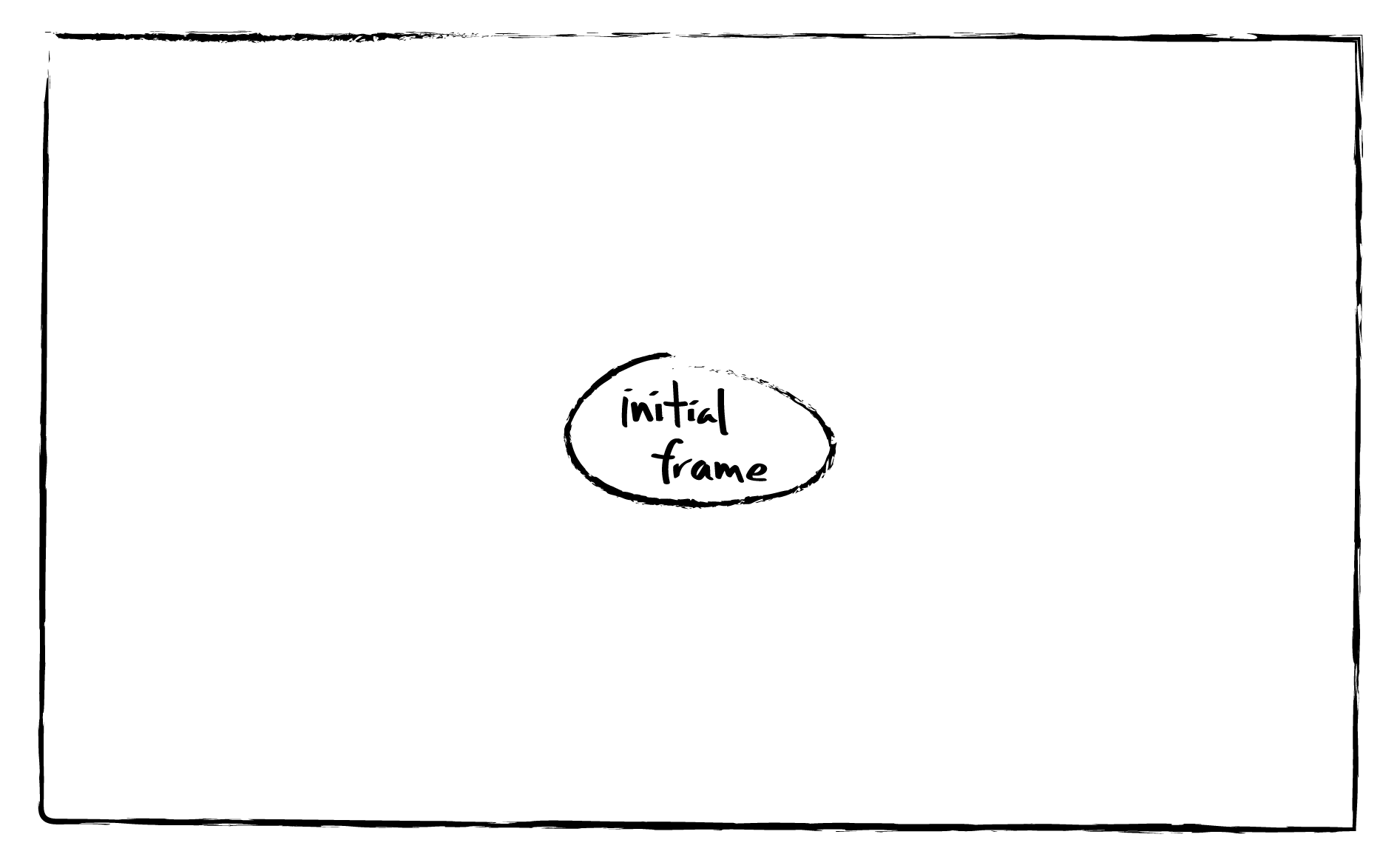
Now radiate out by adding new bubbles. Ask each participant to share their perspective with regards to that initial frame, which may include potential root causes, key data points, anecdotes, perceptions, experiences, stakeholders, places, resources and other influential factors. Make sure to capture each keyword or short sentence in a new bubble. Tip: you may benefit from giving participants some pre-work. This gives them a chance to collect their thoughts before the session, and it gives you input to jumpstart the exercise. The “Framing: What’s the Problem” worksheet is a useful pre-work that you can give participants so you can use their responses as an input for this exercise.
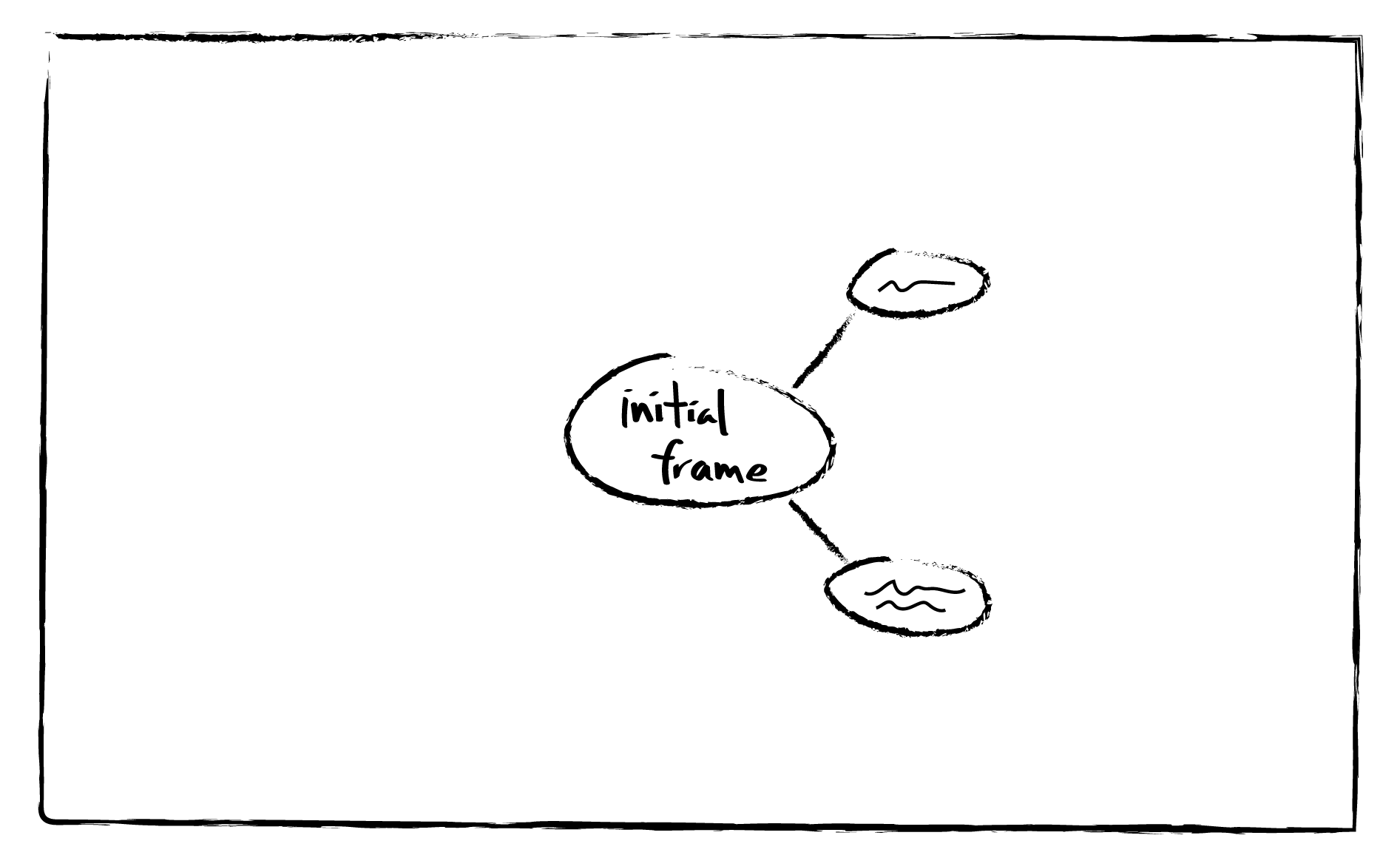
Keep your Collective Mind Map balanced by drawing new bubbles around your initial frame through asking participants to share their perspectives, anecdotes, and experiences.
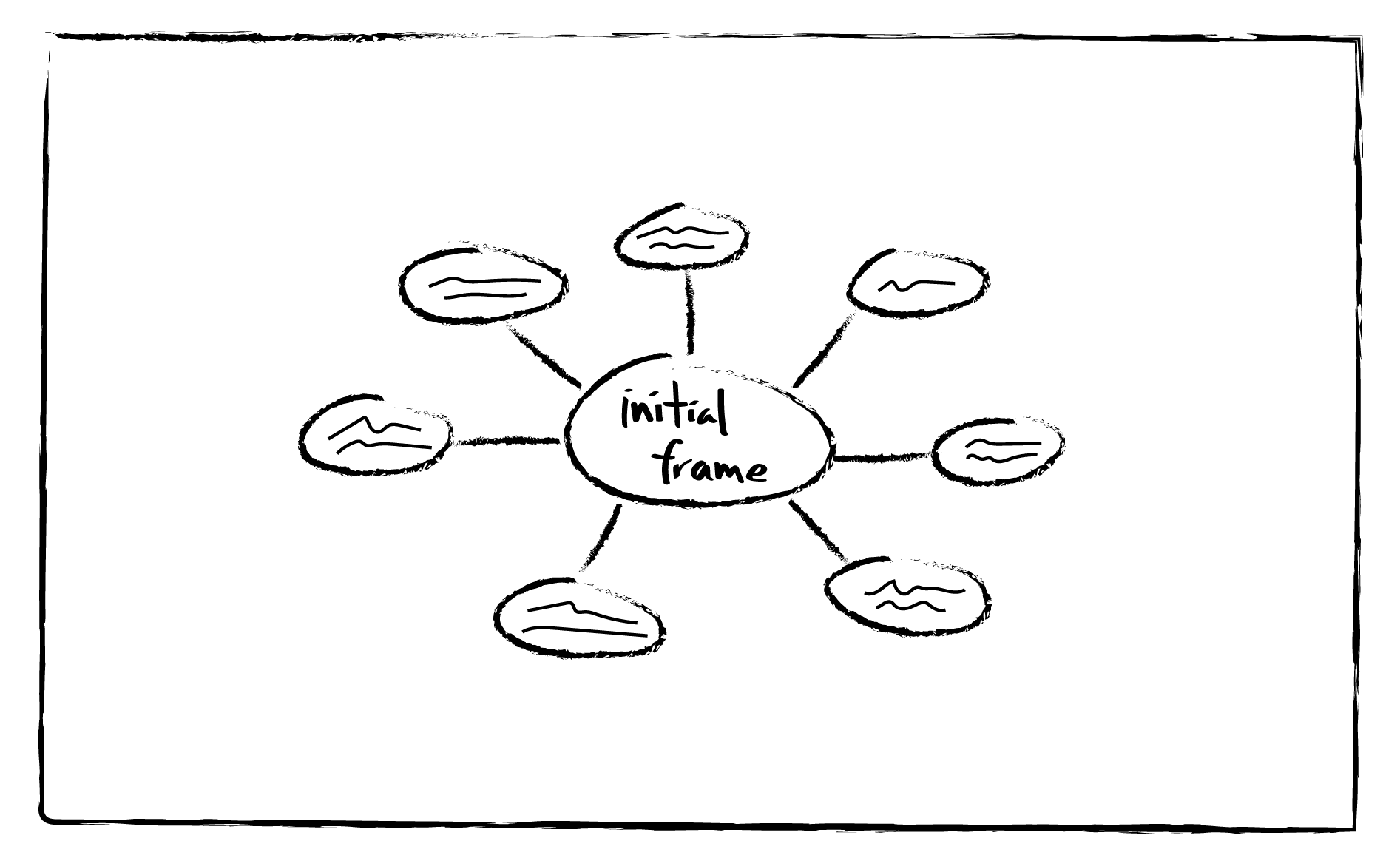
As you continue to add bubbles, look for connections between bubbles and draw lines to represent these. You can use color and line thickness to represent strength or type of connection. Consider naming the lines and drawing some lines as arrows to represent direction.
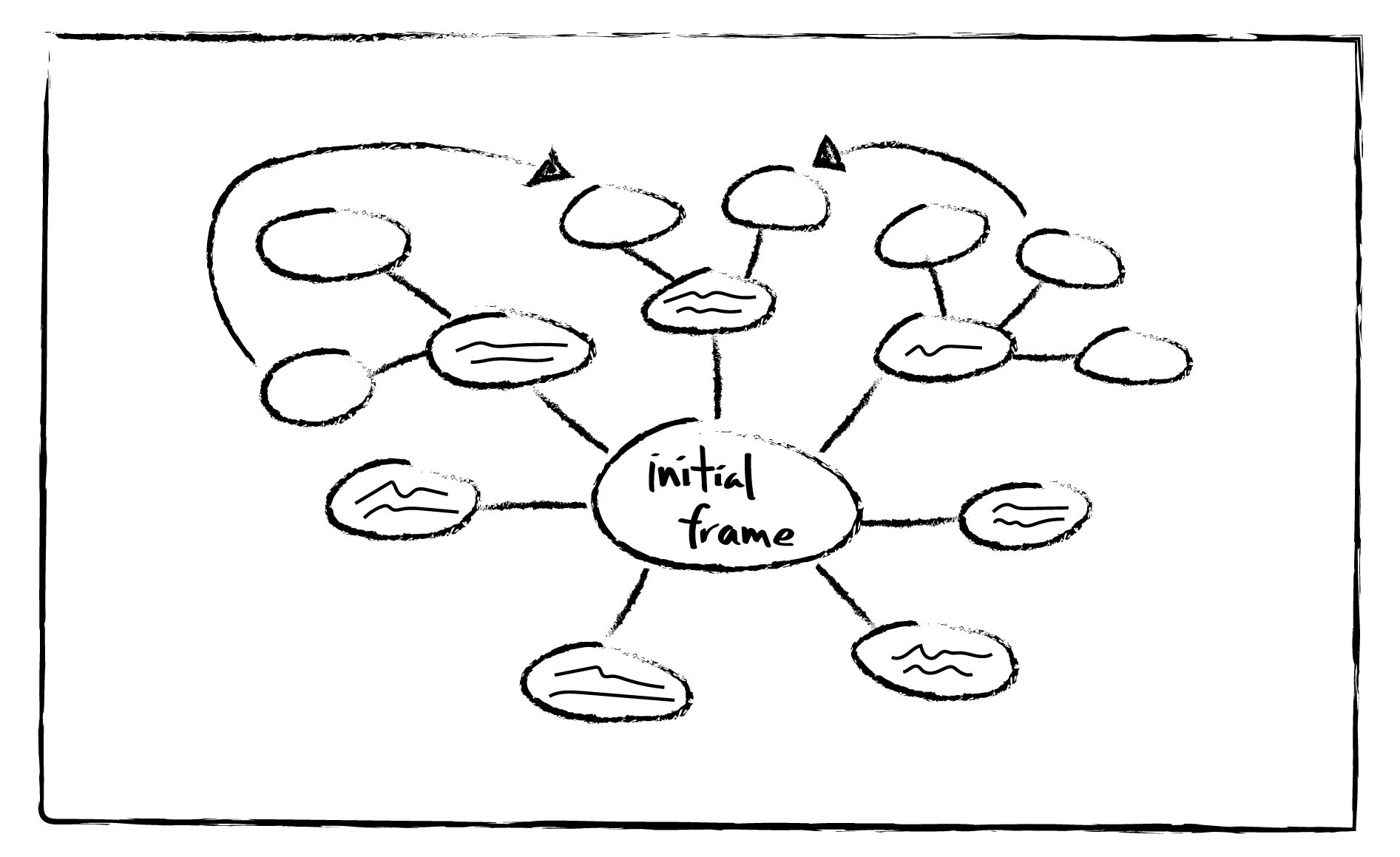
Keep a list of stakeholders to the side of your Collective Mind Map. Populate this list as individuals, groups or organizations are named during the exercise.
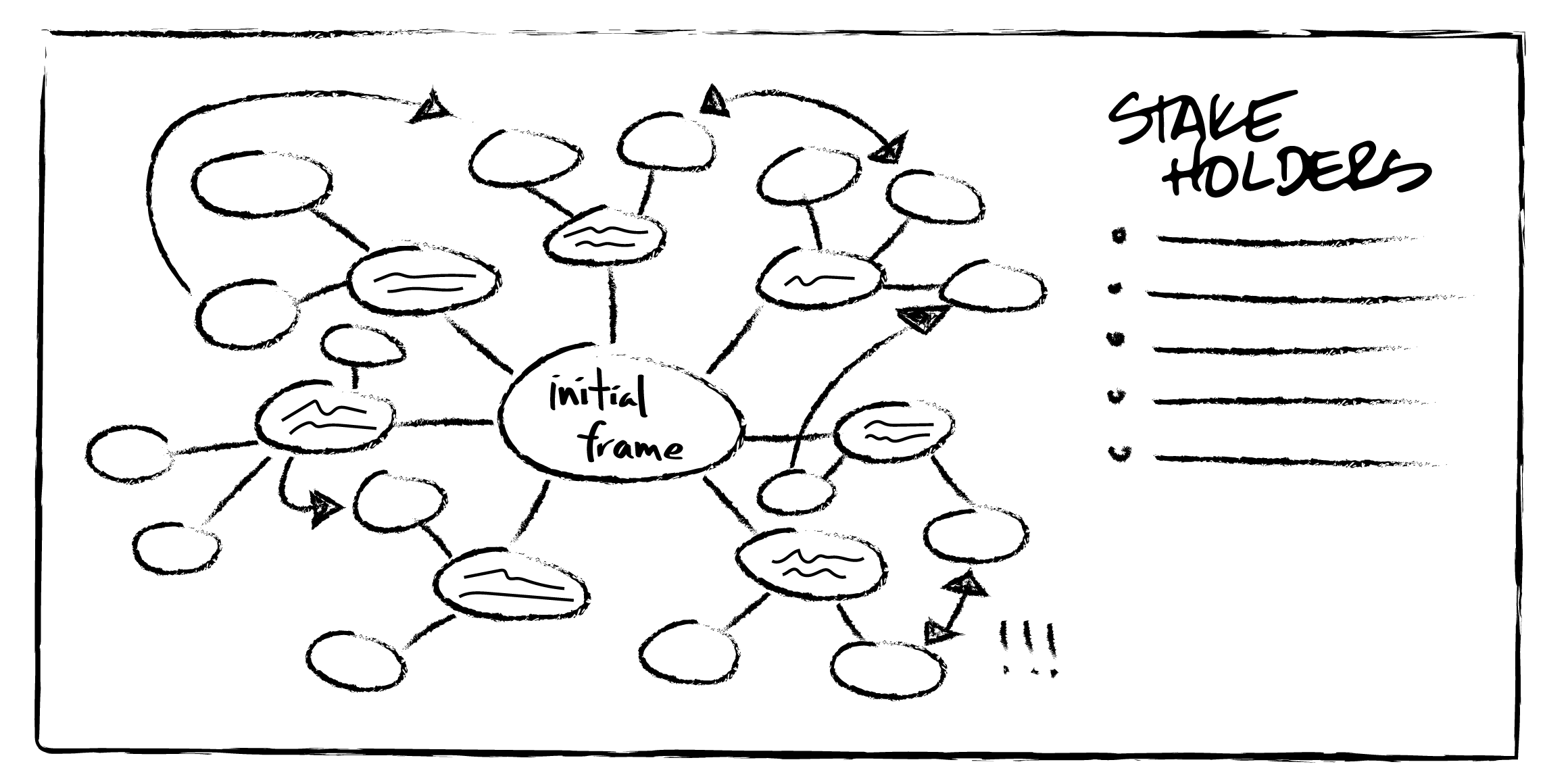
Once you start running out of space or participants run out of things to add, use a different color marker to cluster concepts that have some affinity, with input from the participants.
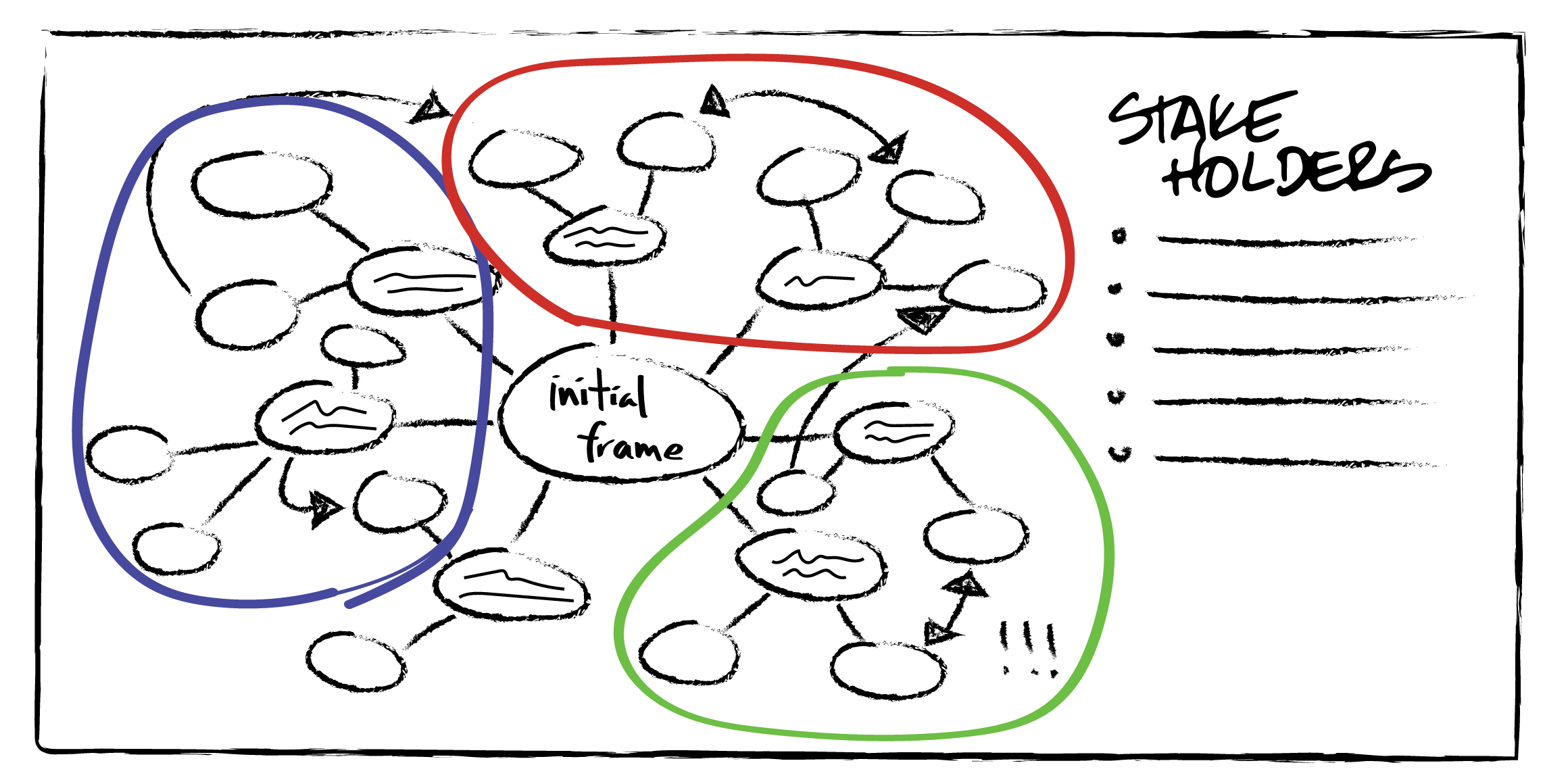
Engage the participants in naming each cluster in a way that makes sense to everyone, using full sentences instead of single words.
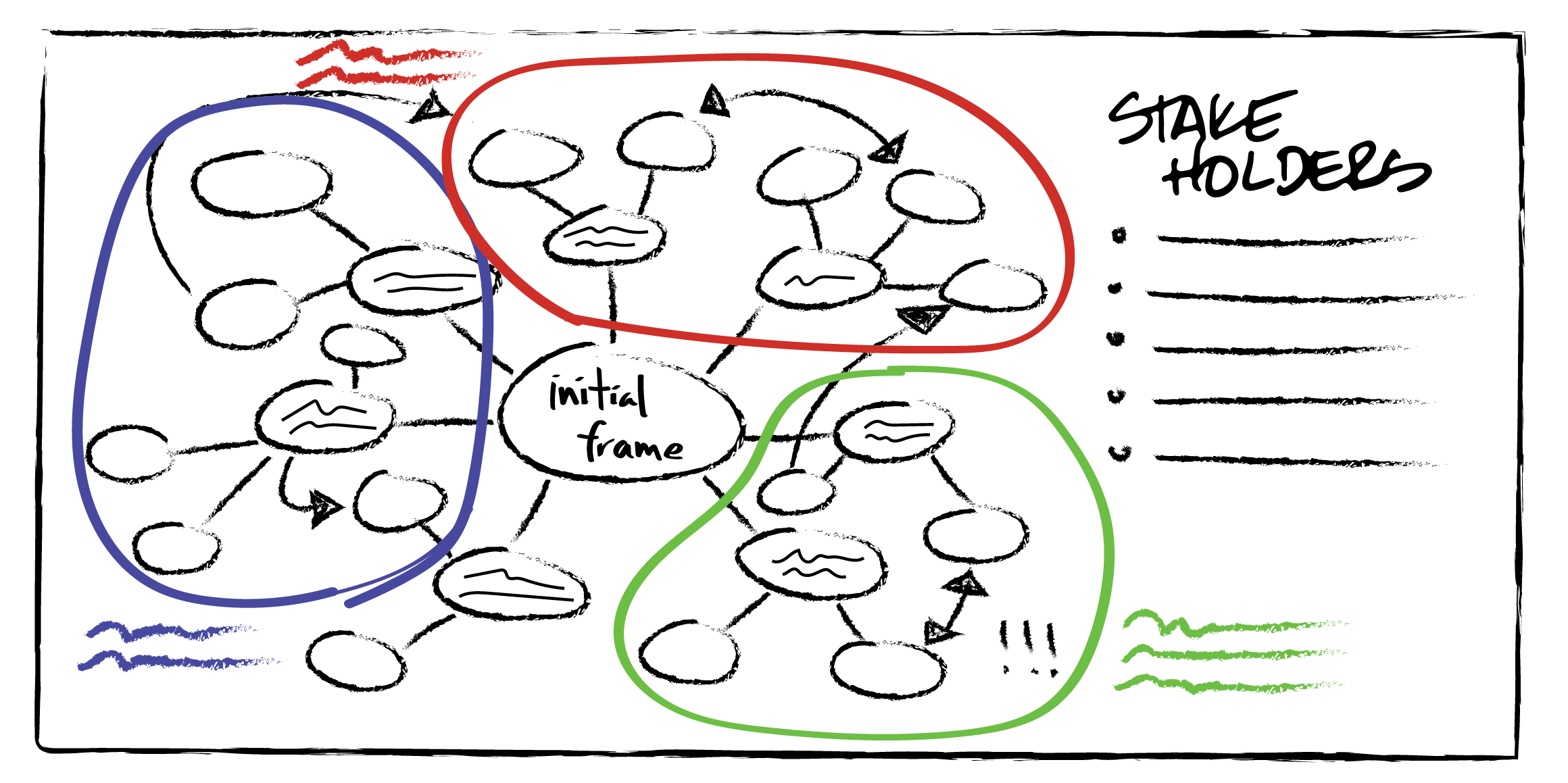
If your goal is to land on a re-definition of the problem or opportunity to be addressed, consider having participants vote for the cluster that seems the most important to them, and then collectively write a new frame or problem/opportunity definition. On the other hand, if your goal is to conduct the Collective Mind Map purely as an exploration of the initial frame, the identified clusters may give you a starting point to inform other activities, such as to determine topics of inquiry for Listening activities.
Collective Mind Mapping May Help You:
- Create empathy within a team or community by exploring how a common challenge affects community members in different ways.
- Align towards a shared definition of success.
- Identify key stakeholders.
- Agree on what is known and what is not known about the problem.
Risk of Not Doing This:
Different stakeholders (team members, people in the community) will only look at the problem or opportunity through their own perspective, and not align towards a common vision for change.
Potential Inputs:
Giving the Framing: What’s the Problem worksheet as pre-work to participants will help you jumpstart the creation of a Collective Mind Map.
What May Come Next?
- Capture any changes to the problem or framing - and the rationale behind these changes - using the Reframing worksheet available in the Sense Making module.
- You may use the emerging list of stakeholders to conduct Stakeholder Analysis, which is another method in the Framing module.
- Areas of inquiry identified in the Collective Mind Map will be a useful input to shape objectives and questions to ask when planning for activities from the Listening module.
Do's
- Capture keywords or brief sentences - as told by participants - inside each bubble so you can keep up with what is said.
- Remember to draw bubbles around each point made and lines connecting them to other related points.
- Explore 3 - 7 starter nodes around the initial framing. Make sure each node is explored with enough rigor before moving on to another one.
- Engage participants to find connections between points.
- Balance general concepts with specific perspectives and data points.
- Ask participants to name lines (representing connections) and clusters (representing emerging themes).
Don'ts
- Do not capture everything that is said.
- Do not leave blocks of text “floating” in the map by not drawing bubbles around them. The bubbles create boundaries between concepts, making it easier to navigate the map and find connections.
- Do not analyze, process, edit or synthesize on the fly. Participants feel disenfranchised when you don’t capture what they are saying and instead try to capture something they share in your own words. Besides, analysis should be a separate step that comes later and requires its own rigor.
- Do not leave any thoughts unexplored.
- Do not keep the exploration too generic or dive straight into the details.
- Do not name lines and clusters on your own while participants watch. They are not there to watch you do all the work.
Documentation Tips
Photos are best to help participants remember what they produced. Usually it’s best to include high resolution photos with call-outs and text explanations rather than simply translating the Collective Mind Map into text or pretty pictures that do not resemble the original Collective Mind Map created with stakeholders. Here’s an example of a Collective Mind Map photo:
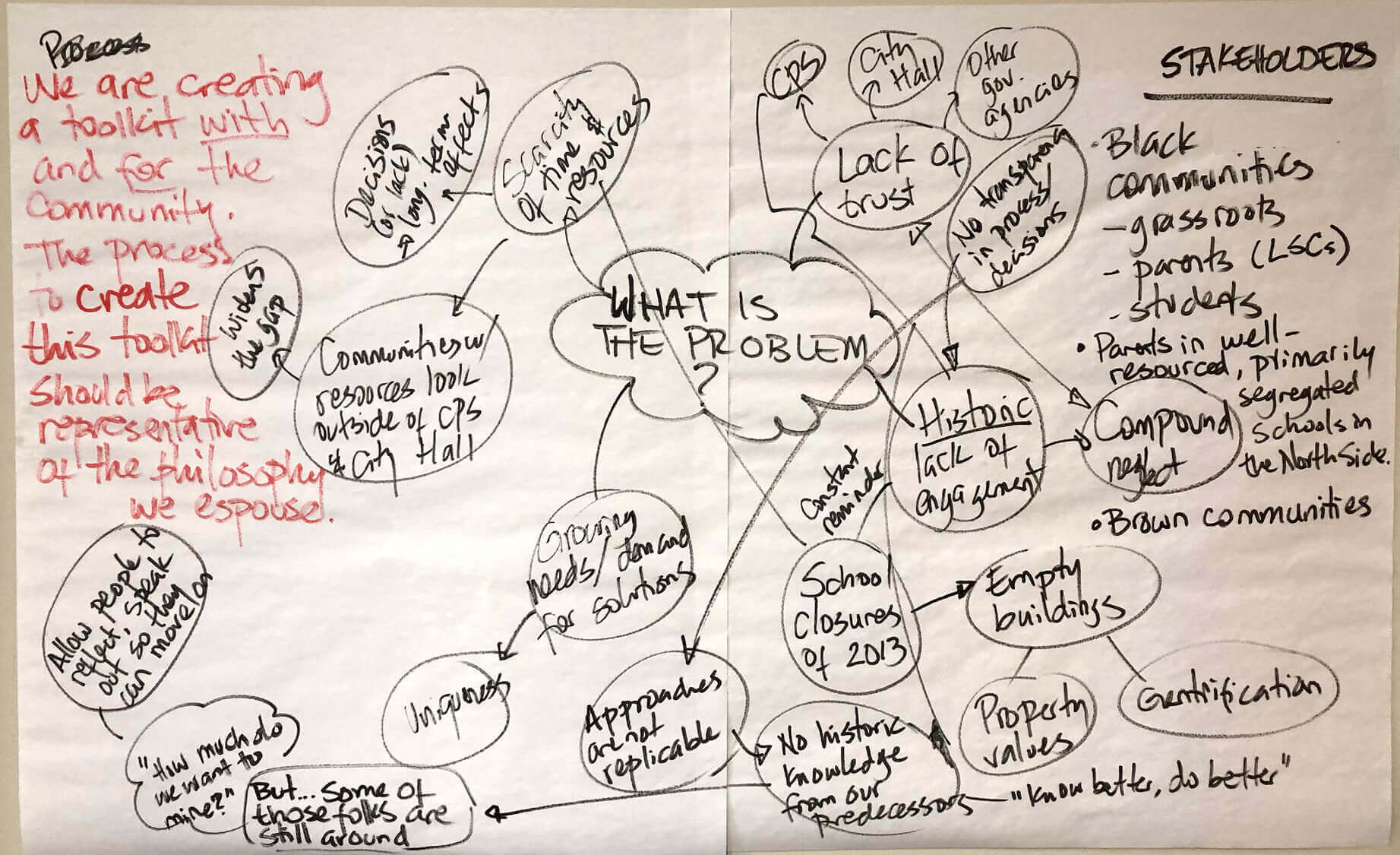
Five Whys
Deepen your understanding of a problem, and recast your assumptions in a new way
Overview
Five Whys helps you challenge your initial frame and understanding of the context around it. It aids in exploration and prioritization of the frames you have developed.
How to complete the Five Whys activity using the worksheet provided.
- Write your Initial Frame. This may come from a previous activity, such as Collective Mind Mapping, or you can create one based on research and personal experience.
- Then, ask yourself: Why is this happening? You should then come up with at least two explanations based on potential root causes. For example, one potential root cause may be based on an economic reason and the other potential root may be grounded on a social issue.
- Then, dig even deeper and write down reasons for these root causes.
- You will end up with three layers: your original frame, two initial explanations, and four follow-up explanations.
Problem: Kids don’t have valuable after school activities.
|
Why is this happening? ex. Because there are fewer students in the school, so we can't afford after school sports and culture activities. |
Why is this happening? ex. Because there is no after school transportation for kids to safely travel to nearby programs. |
||
|
Why is this happening? Ex. Because there are fewer kids in this neighborhood now. |
Why is this happening? Ex. Because kids from this neighborhood are picking other schools. |
Why is this happening? Ex. Because budget cuts eliminated free options in the neighborhood. |
Why is this happening? Ex. Because there are no business partners who will sponsor a sports team at our school. |
Prioritize the frame you (or the team, if you are using this method in a team activity) would like to focus on. Some ways to think about which frame to focus on are :
- Impact. Is this a problem worth solving?
- Empowerment. Is this a problem we are empowered to change?
- Resources. Do we have the people and resources to tackle this problem?
- Context. Will solving this problem put us in the right path towards solving bigger problems?
Keep in mind that there is no wrong frame, but the frame you choose will inform what you do next.
Five Whys May Help You:
- Dig deeper into the existing problem.
- Explore alternative needs and viewpoints.
- Consider why problems are happening.
Risk of Not Doing This:
- You might select a frame too early.
- You might assume alignment when your stakeholders have different interpretations or perspectives.
- You might oversimplify a complex problem or try to ignore its complexity in favor of immediate action.
Potential Inputs:
- Personal awareness, which comes from your own experience or the experience of people close to you with the problem that you are exploring.
- You may facilitate a Collective Mind Mapping activity (found in this Framing module) to unearth many potential problems and root causes.
- Stakeholder Analysis (also found in this Framing module) may help you identify those most impacted by the problem.
What May Come Next?
You can use the frame(s) identified in the Five Whys as an input for a number of different activities, such as:
Do's
- Write your problem statement carefully. It is best to use a simple 1–2 sentence problem statement when framing intent. This problem statement should be broad enough to leave room for coming up with creative solutions, but narrow enough that it does not become too daunting to tackle.
- Consider different stakeholders and their needs as possible explanations for answering “Why is this problem happening?”
- Welcome different perspectives.
Don'ts
- Do not always think of problems in a negative manner. Problems can also be seen as opportunities or questions to help reframe your thinking.
- Do not under or overestimate evidence that comes from anecdotal experience or intuition. Give yourself permission to voice and capture these stories and ideas with the goal of thinking of ways to explore, challenge and validate them later on.
- Do not overload a single frame. It’s better to treat each stakeholder or potential root cause as a separate frame.
Stakeholder Analysis
Identifying the people impacted by a problem and have a stake in a future solution
Overview
In this module, you will use Stakeholder Analysis to identify the key internal and external stakeholders who are invested in the problem at hand. This exercise helps you visualize and prioritize people who should be engaged as you develop a solution.
How to complete the Stakeholder Analysis activity
This method focuses on three elements: identification, mapping relationships, and prioritizing stakeholders. A fourth element of the definition - understanding their potential for developing alliances - can be done with methods from the Sensemaking module once you have conducted other activities found in the Listening and Ideation modules.
Step 1: Use stakeholder mapping to identify all potential stakeholders and map their relationships
- Define the scope for the exercise. For example, defining the scope as a particular school will yield a different set of stakeholders than defining it as the entire district.
- Spend a few minutes generating a broad list of stakeholders. You could capture each one of these in a separate sticky note. Think in terms of who could have a role, be directly or indirectly impacted, oppose change, etc. Make sure you are specific in your naming, ideally getting to the level of individual stakeholders. For example, “CPS” is too broad, as there may be many stakeholders inside CPS with different roles, levels of influence and impact. Instead, you should write a person’s name or title, e.g. “CPS Chief of Teaching and Learning.”
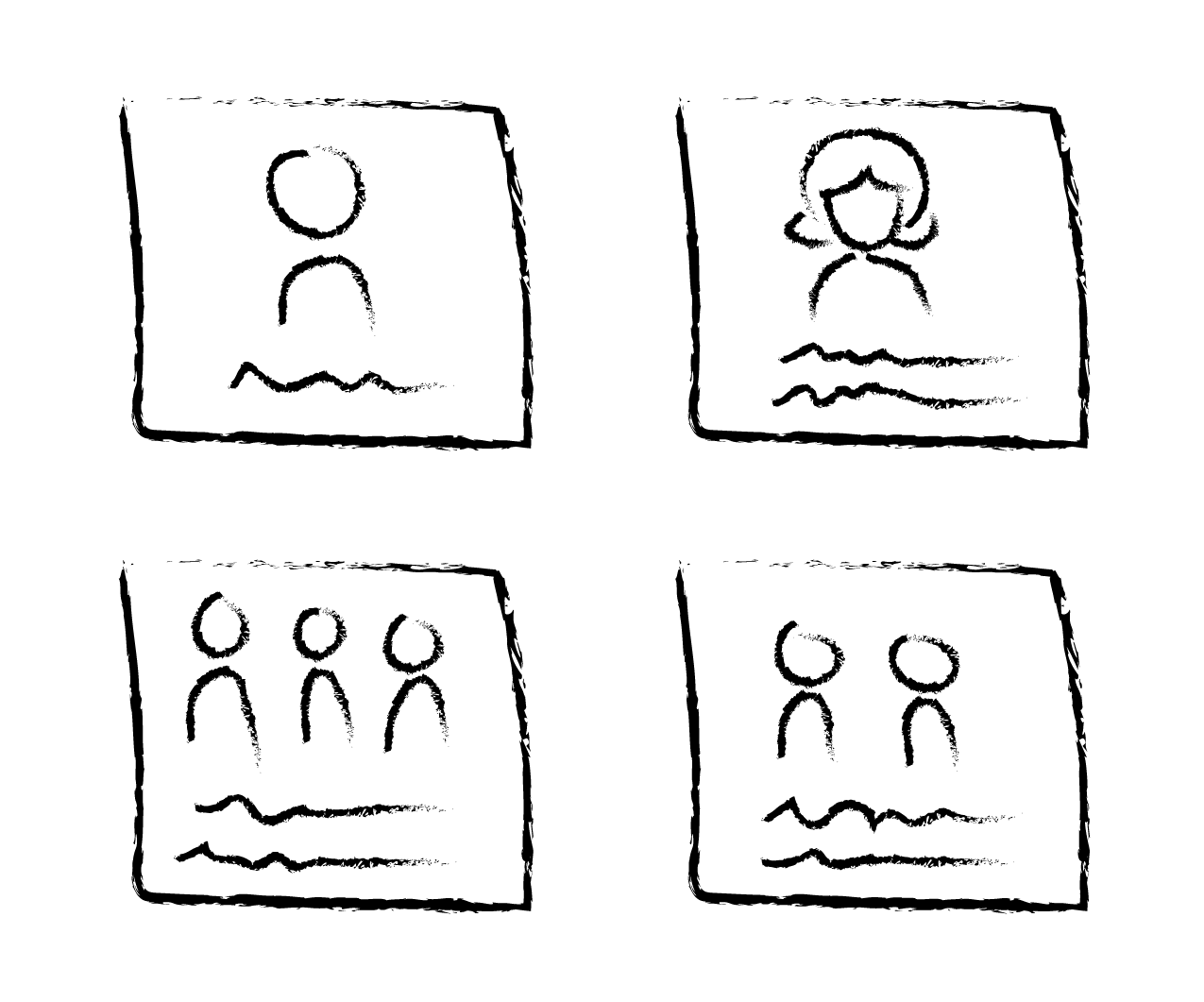
- If you are conducting this exercise with a group of people, divide the large group in small groups of three to four people, and have each person spend a few minutes sharing what they came up with in their groups. Ask each group to eliminate any duplicates and ensure that vague or broad stakeholders are discarded and replaced with more specific ones.
- Transfer the sticky notes to a physical or virtual whiteboard. Organize them in a way that tells a story. For example, you could map different stakeholders to show a process from left to right, or you could put a key stakeholder in the center of your map and arrange the sticky notes based on how close other stakeholders are to them.
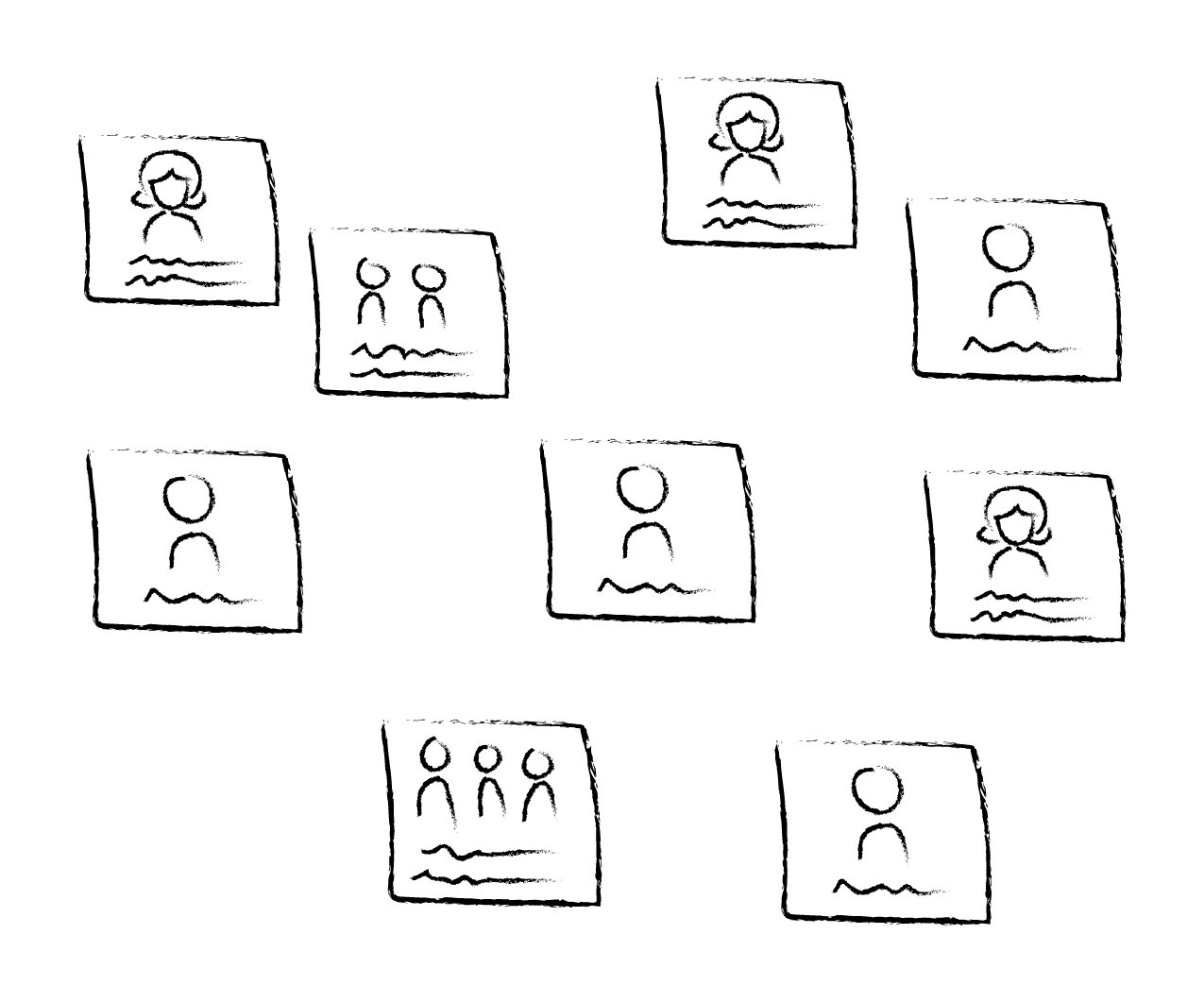
- Use visual cues such as color, arrows, circles and lines to show relationships and connections between different stakeholders.
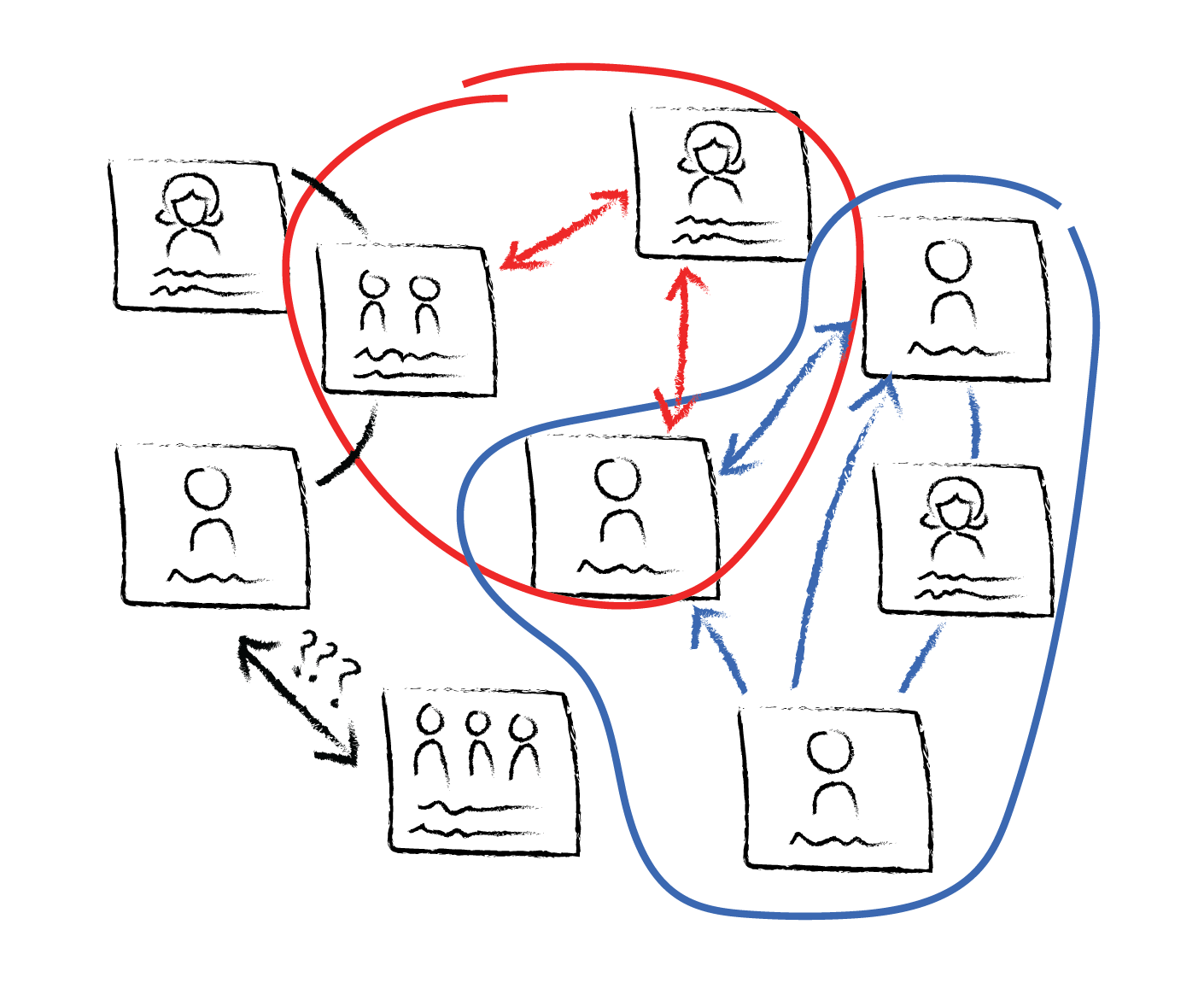
- Look for and fill in gaps. Once you start drawing circles and arrows, you will likely start thinking of stakeholders who are missing from your map. Often, these are people who are easily overlooked but very impacted by the problem you are exploring, like school bus drivers or after school tutors who may be impacted by a change in school schedules.
Step 2: Stakeholder prioritization
By now, your stakeholder map should give a comprehensive picture of all people who are impacted by the problem you are exploring. Now, it is time to decide who to include in your next exercise: prioritization.
- If you are conducting this as a group exercise, you might start by having each person in the room vote for the most critical stakeholders based on a clearly defined objective. for your exercise. For example, people may vote for different stakeholders if your objective is to identify people to engage in 1-on-1 interviews than if your objective is to identify potential allies to drive change in the school.
- Transfer the stakeholders with the most votes to a two-by-two prioritization matrix.
- Rank the stakeholders across the X-axis based on how Impacted they are by the problem. By the end of this step, your sticky notes should be in a straight line that is evenly distributed across the X-axis.
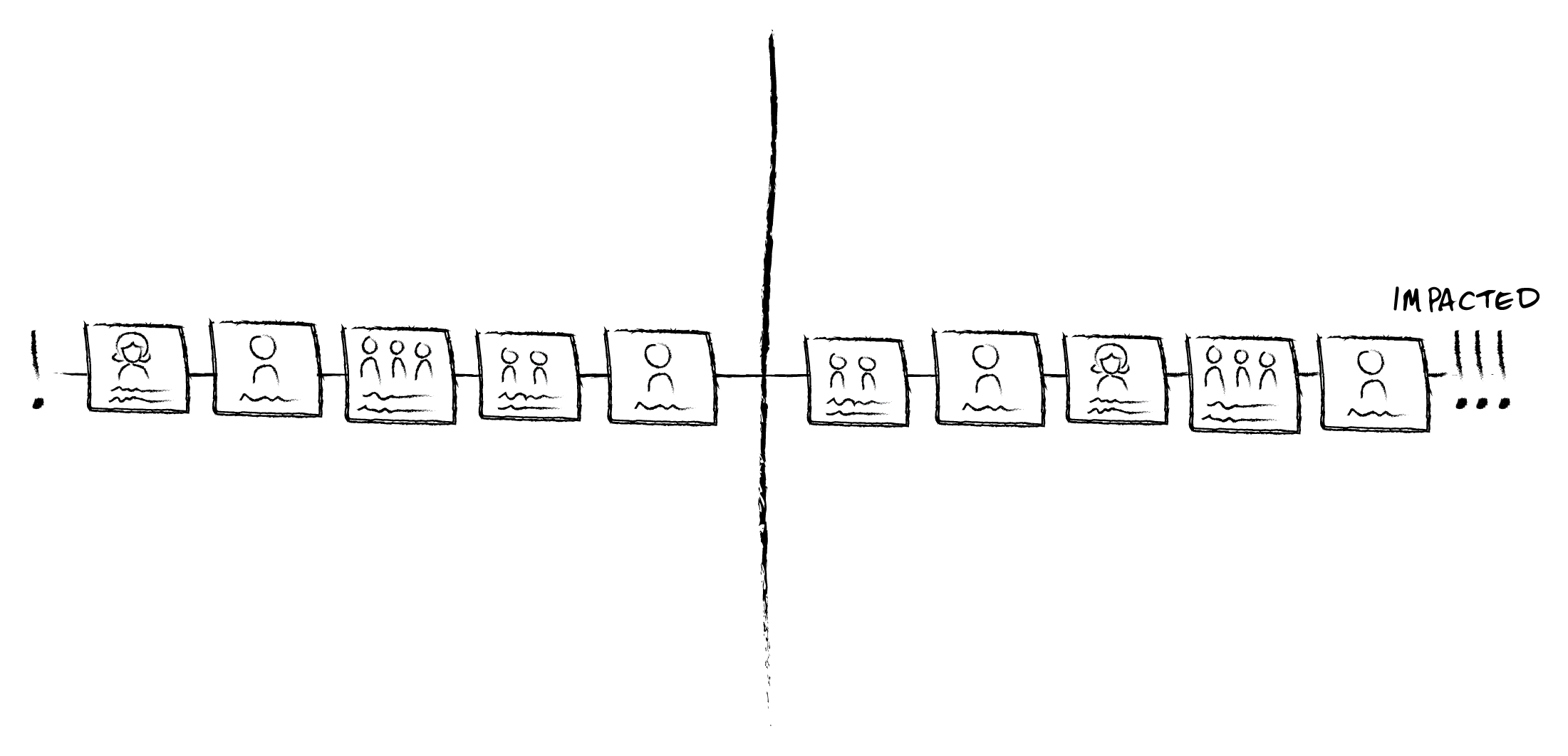
- Now, rank the stakeholders across the Y axis based on how Influential they might be in maintaining the status quo or in driving change. By the end of this step, your sticky notes should be well distributed across the four quadrants of your matrix.
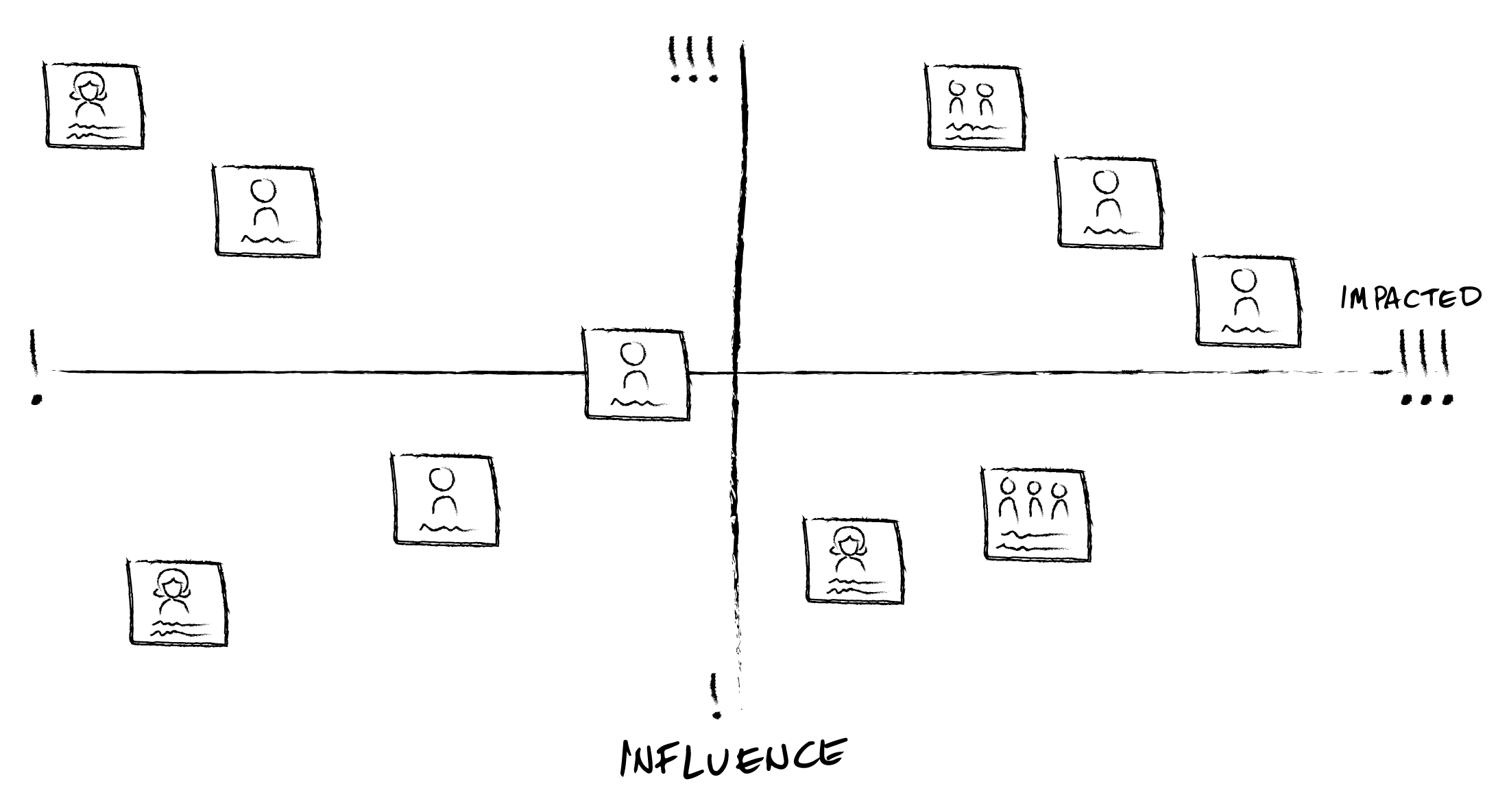
- Now, name each quadrant in the context of the problem you are exploring. For example, the quadrant at the intersection of low influence and highly impacted could be named “the helpless” or “the underheard.” This naming exercise will give you insight such as questions you may want to ask stakeholders in that quadrant, or attitudes they may have towards the situation you are exploring.
- Circle priority stakeholders based on what you want to do next. For example, you may use this to choose people to have one-on-one conversations with or to invite to a facilitated group event.
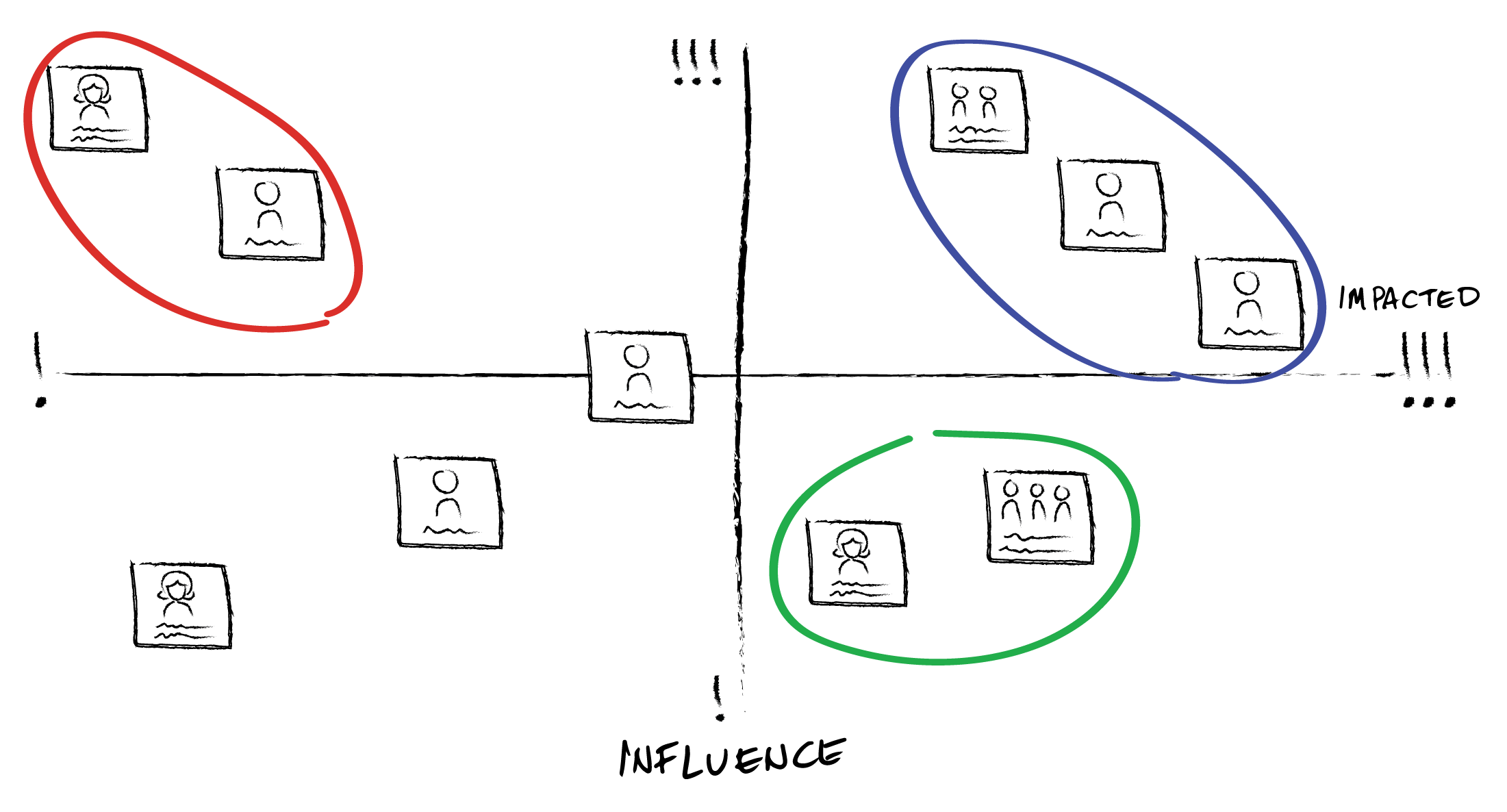
Stakeholder Analysis May Help You:
- Identify all the stakeholders who have some level of interest in the system.
- Identify stakeholders who are most impacted by the problem or most influential in driving change.
- Articulate the needs, motivations and desired outcomes of different stakeholders.
- Understand relationships between different stakeholders.
Risk of Not Doing This:
- You may ignore or fail to identify a key stakeholder.
- You may miss the opportunity to involve stakeholders who carry the most influence or those who will be most impacted.
- You may not uncover the broader ecosystem of interactions within the community, which could impact your credibility with other stakeholders or it may result in less desirable project outcomes.
Potential Inputs:
- Interviews may help you identify stakeholders
- Contextual awareness
Do’s
- Make sure that all of your stakeholders are specific. Just saying the name of an agency or a department is not sufficient. Include specific individual's names where possible, otherwise aim for vivid descriptions of the people or roles or backgrounds that you are capturing.
- Consider both internal and external stakeholders.
- Make it visual! Don't just create a list of stakeholders. Use bubbles and arrows to showcase their proximity to the problem and relationships with each other.
Don'ts
- Do not generalize. Different community members have different goals and aspirations, so honor them as individuals.
- Do not assume that the most influential people should be your highest priority moving forward. People who feel the problem the most (i.e., those who are most impacted by it) are often the least influential in the status quo but could be your biggest allies in driving change.
Documentation Tips
Photos are best. Participants remember the experience and what they produced together. Usually it’s best to include high resolution photos with call-outs and text explanations. You can also place a photo of the original Stakeholder Analysis activity right next to a digital version that resembles all the components and location of the original and is easier to read.
References
Lindenberg, Marc and Crosby, Benjamin. Managing Development: The political dimension Kumarian Press, Connecticut, 1981, 217 pp.